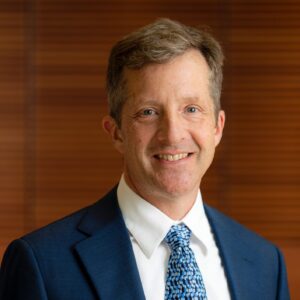This story was originally published by the Office of the Vice Chancellor for Research
Mark Eriksson, professor of physics, and Mikhail Feldman, professor of mathematics, have been named recipients of UW–Madison Steenbock Professorships.
“This professorship is among the most prestigious and important professorships for researchers at the UW–Madison,” says Cynthia Czajkowski, interim vice chancellor for research. “This recognition is accompanied by discretionary funds to provide recipients the freedom to explore innovative research directions and to explore new approaches to their research areas.”
In the early 1980s, Evelyn Steenbock initiated a program to endow a series of professorships in the natural sciences in honor of her late husband, Harry Steenbock, emeritus professor of biochemistry.
Harry Steenbock (1886-1967) developed an inexpensive method of enriching foods with Vitamin D. His discovery led to the eradication of rickets, the bone-deforming deficiency disease, throughout most of the world. He is also renowned for his discovery of the conversion of carotenes to vitamin A.
Steenbock assigned his patents for advances in human and animal nutrition to the Wisconsin Alumni Research Foundation (WARF), and accumulated royalties from Steenbock’s patents supplied about half the funds for the Steenbock Memorial Library construction on campus. Steenbock Memorial Library is a primary resource library for the students, faculty and research staff at the UW–Madison.
The Steenbock Professorship provides research funds to recipients annually for 10 years and honors those faculty who have made major contributions to the advancement of knowledge, primarily through their research endeavors at UW–Madison, but also as a result of their teaching and service activities.

Eriksson, awarded the Steenbock Professorship in the Physical Sciences, was recently chair of the Department of Physics. He joined the UW–Madison physics faculty in 1999 and is a world-leading expert in the development of quantum information systems using solid-state quantum dot qubits.
As department chair, Eriksson promoted the Wisconsin Idea by supporting the department’s role in connecting with audiences all around the state of Wisconsin, including restarting The Wonders of Physics Traveling Show.
Eriksson received a bachelor’s degree in physics and mathematics from UW–Madison in 1992, received his PhD from Harvard University and was a postdoctoral member of technical staff at Bell Labs.
His research has focused on quantum computing, semiconductor quantum dots and nanoscience. He leads a team dedicated to developing spin qubits in gate-defined silicon quantum dots with the goal of enabling quantum computers, which manipulate information coherently, to be built using many of the materials and fabrication methods that are the foundation of modern, classical integrated circuits.
Eriksson is widely recognized for engaging collaborative partnerships with industry, government leaders and other university research institutions to tackle some of the greatest challenges in quantum information science and technology. Last year, the Eriksson group announced its partnership with Intel and HRL Laboratories as part of the LPS Qubit Collaboratory (LQC) national Quantum Information Science Research Center hosted at the Laboratory for Physical Sciences at the University of Maryland, College Park to collaborate on research in advanced computer technologies.
“I intend to use the award to explore new opportunities in silicon-based quantum computing, including new ideas for connecting qubits to each other across large distances, and the use of near-atomic-scale metamaterials to endow semiconductors with properties even better suited to quantum computing than those available today,” Eriksson says.